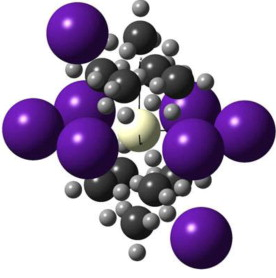Headed by Dr Marina I. Borzenko (e-mail: borzenko@elch.chem.msu.ru)
Polyoxometalates are the multicharged inorganic polyanions of exact geometry, typically highly symmetric species with stable in solutions. These species are attractive as the model reactants due to their large size (exceeding the size of solvent molecules) and ability to strong adsorption at the electrode surfaces: these features allow to construct the artificial reaction layers with precisely fixed electron tranafer distance, being the most unpredictable parameter of the theory. Another basic problem which can be addressed in experiments with these model reactants is the separation of two coupled effects of supporting electrolyte concentration: the screening role in electrostatic electrode-reactant interaction and the reactant charge decrease resulting from ionic association. 
We are working with various types of polyoxometalates (Keggin, Dowson, Anderson structures, as well as a number of other nameless structures). We are dealing with reactant synthesis ourselves, and also study their state in solution by means of various spectroscopic techniques.
- L.V. Pugolovkin, M.A. Naumova, A.A. Fedorova, M.I. Borzenko, G.A. Tsirlina. Half-wave potential as affected by supporting electrolyte nature: Interplay of adsorption and ionic association for electroreduction of V(V)-mixed addenda Keggin tungstophosphate. Electrochim. Acta, 2013. 111: p. 292-298. DOI: 10.1016/j.electacta.2013.08.067.
- L.V. Pugolovkin, M.I. Borzenko, G.A. Tsirlina. Isopolymolybdate adsorption as related to inhibition and self-inhibition of electrode processes. J. Electroanal. Chem., 2015. 756: p. 131-139. DOI: 10.1016/j.jelechem.2015.08.028 .
- G.A. Tsirlina. The role of supporting electrolyte in heterogeneous electron transfer. J. Solid State Electrochem., 2017. 21(7): p. 1833-1845. DOI: 10.1007/s10008-017-3669-1.